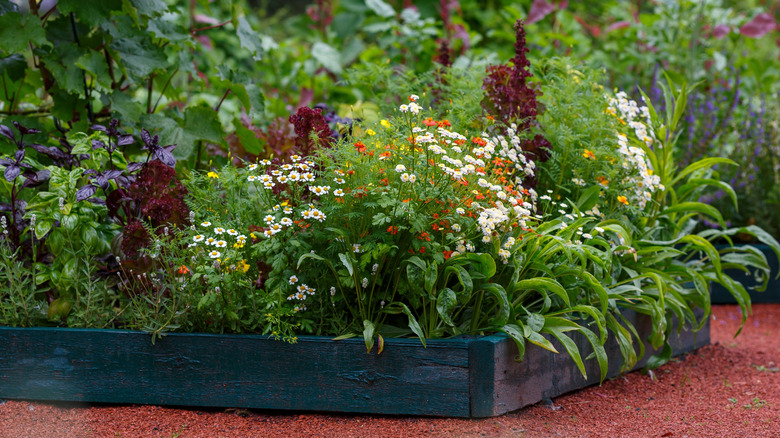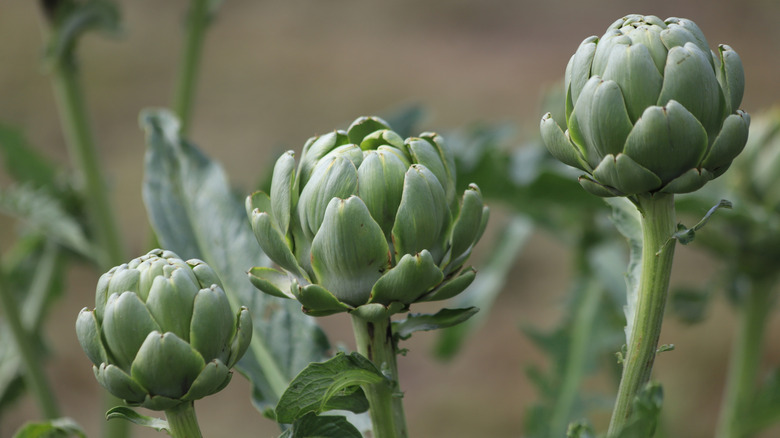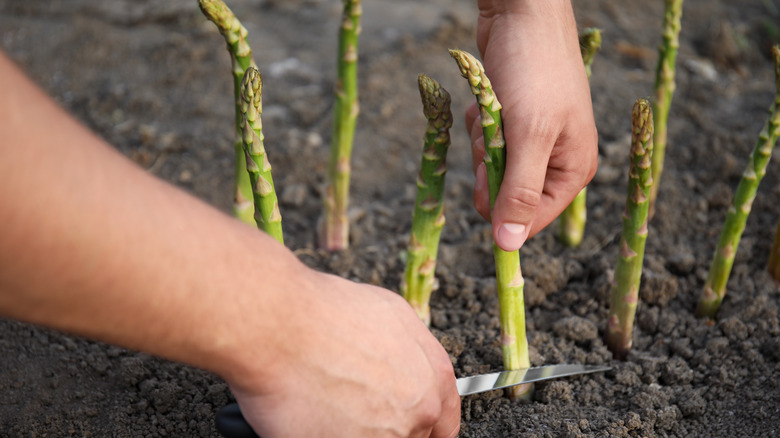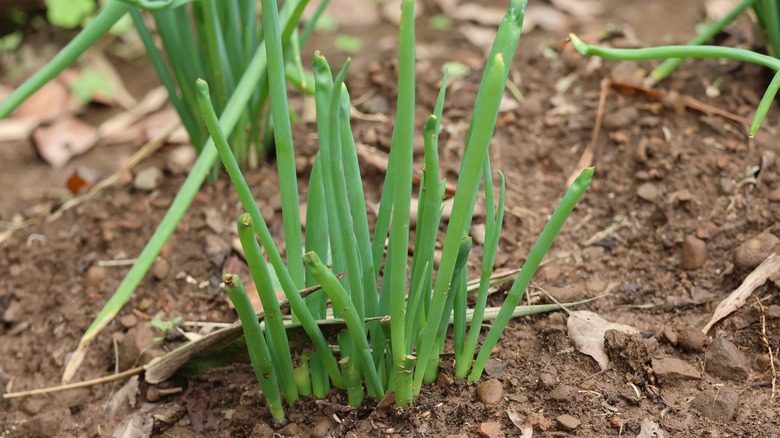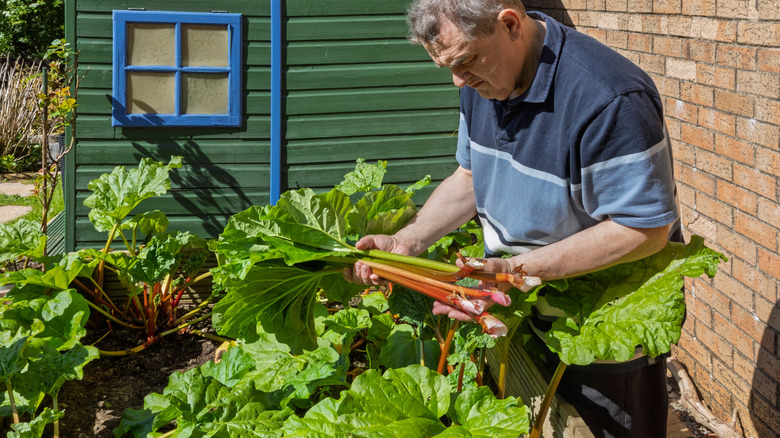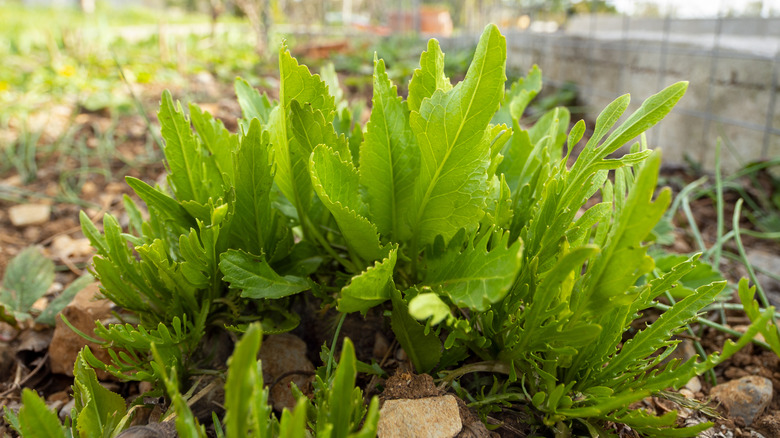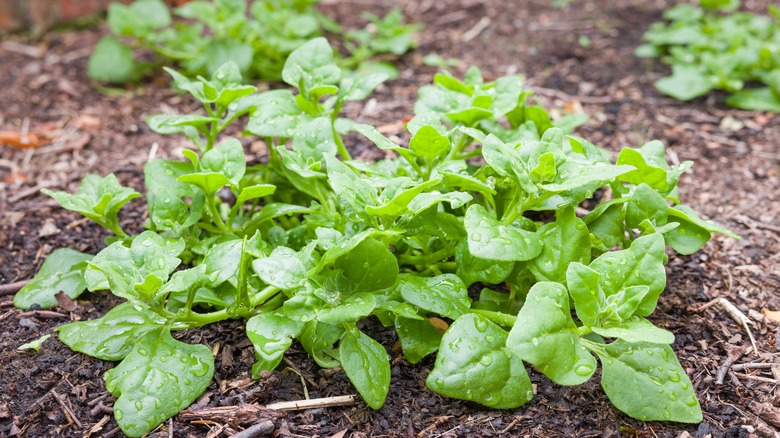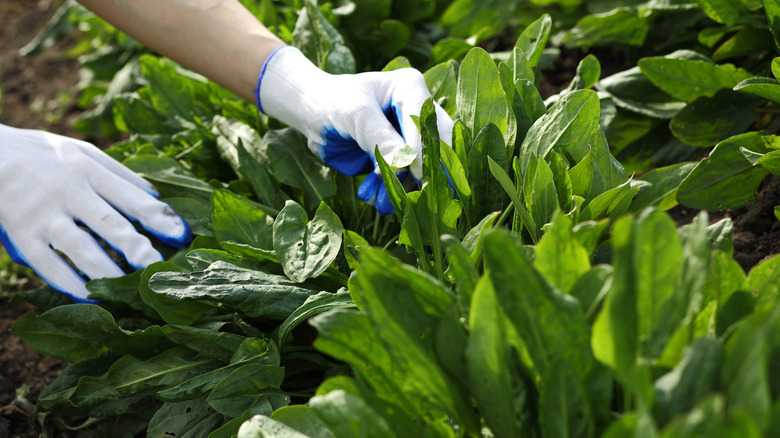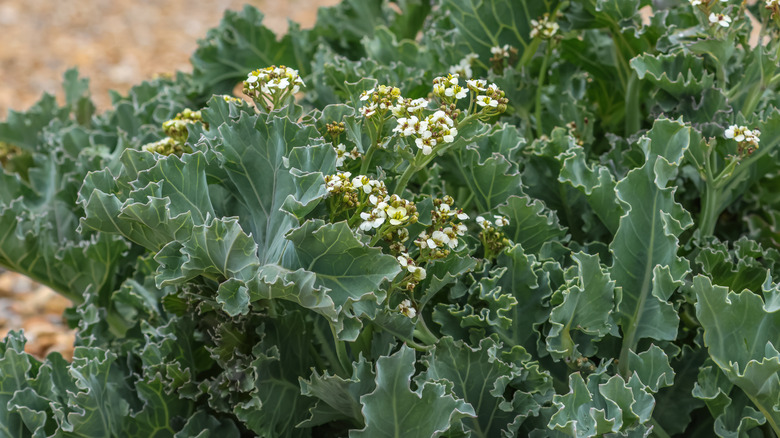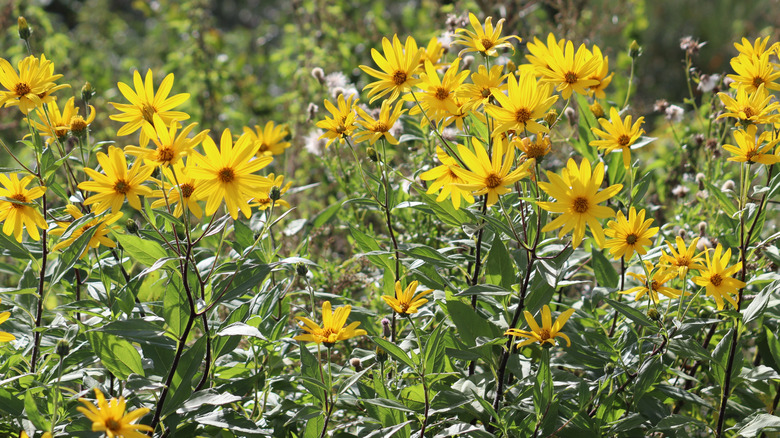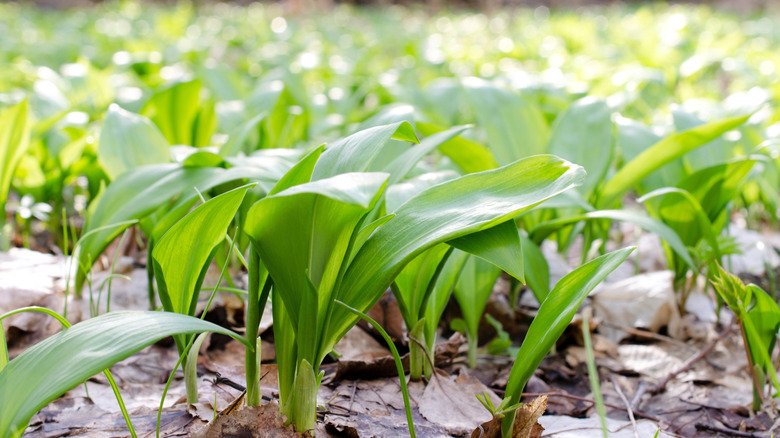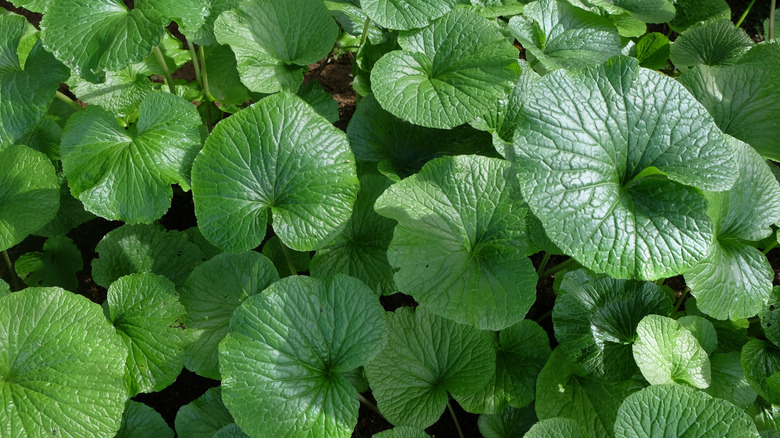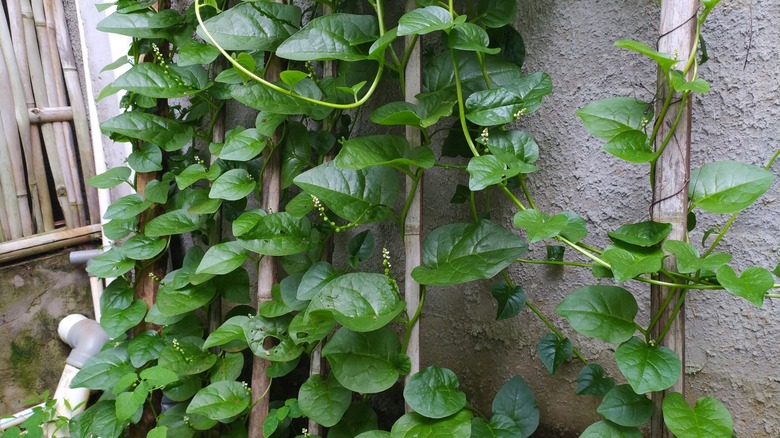Plant These 12 Veggies Once And They'll Come Back To Your Garden On Their Own Every Year
Although you're probably familiar with annual vegetables that you have to plant anew each year depending on the season, there are actually veggies that you can plant once, and they'll come back in your garden on their own every year. These are known as perennial vegetables, which means that they will continue to grow for many years without you having to constantly replant them. For many of these, you have to take into account your climatic conditions if you want them to thrive and reward you with fresh produce for years to come.
While there are many advantages to growing perennial veggies, you do have to consider that you'll need to allocate garden space to these away from your regular vegetable patch, as you won't be able to plant other types in that location, and many perennials don't handle relocation well. You'll also want to ensure that you provide these plants with the water and nutrients that they need so they'll continue to flourish — although you will find that many varieties are quite low-maintenance. Nevertheless, even if you just choose a handful of perennial varieties, you can have some lovely fresh harvestable produce without putting in all that effort in replanting every season. Some of the more common perennial vegetables you're probably familiar with include artichokes, asparagus, rhubarb, and sunchokes, but there are many others.
Globe artichokes
Globe artichokes (Cynara cardunculus) are fun plants to have in your garden, but you need to give them plenty of space as they can reach heights and widths of up to 4 feet. They can be grown as perennials in USDA hardiness zones 7 through 10. It's the unopened flower buds that you harvest. You want to cut them (with a short stem attached) while they're still quite tight and the tips of the lower bracts start to point upwards. These are best planted in the fall and need a sunny position with rich, well-draining soil.
Asparagus
Growing asparagus (Asparagus officinalis) can be quite rewarding, but you'll need a bit of patience. Once the crowns are planted in zones 2 through 9, it's prudent to wait until the third spring before you start to harvest the tender, young spears. However, your patience will pay off because the plants will continue to produce those delicious stalks for up to 15 years. Asparagus likes a sunny spot with humus-rich soil that drains well. Remember to let some of the stalks fern out, as this is necessary to feed the rhizomes so your plants continue to produce.
Spring onions
Also commonly known as bunching onions or scallions, spring onions (Allium fistulosum) are grown for their delicious leaves, which have a mild onion flavor. You can grow these in zones 6 through 9, in moist, well-drained soil and full sun. The bulbs will create offsets from which new leaves will grow. You can just cut off the tops as you need them and leave the bulbs in the ground to regrow. Or, you can harvest the outer onions, leaving the rest of the clump intact so it can continue to multiply.
Rhubarb
If you can allocate a large area for a rhubarb plant (Rheum rhabarbarum) in your yard, you'll be able to harvest those tasty stems for many seasons, as long as you remember to divide the clumps every 5 to 7 years and provide your plant with plenty of nutrients. Rhubarb will grow in zones 3 through 8, and will produce well when grown in full sun and fertile, well-drained soil. Remember that it's only the stalks that are edible — the leaves and roots are toxic because they contain oxalic acid.
Horseradish
For an attractive perennial in the mustard family, you might like to grow horseradish (Armoracia rusticana) in your garden. Just a single plant can reach a height of 4 feet and a spread of 5 feet. It will grow well in zones 4 through 9, and appreciates full sun and moist, well-drained soil. It's the long tap root that's harvested for consumption, and you should take note that this is one of those vegetables you should wait to harvest after a big frost. Make sure you leave some roots in the ground if you're growing this as a perennial.
New Zealand spinach
While not a true spinach, New Zealand spinach (Tetragonia tetragonioides) can be used in the same way and makes the perfect alternative if you live in a frost-free zone, as it can handle the heat much better. This lovely perennial is drought-tolerant when established but does benefit from regular water and applications of nitrogen. As it spreads through runners, if you harvest the new tips regularly, you'll get a constant supply of new growth. Remember that this plant won't survive a frost, so it needs to be grown as an annual in colder regions.
French sorrel
The tender green leaves of French sorrel (Rumex scutatus) can be used in salads or fresh spring soups. This attractive perennial grows best in zones 4 through 9 and prefers rich, well-drained soil. It can handle a sunny position, but will also thrive in bright shade. Once the plant is well-established and has at least 24 to 36 leaves, you can harvest them frequently to use when needed. Like its close cousin, garden sorrel (Rumex acetosa), this will also thrive when grown in hanging baskets.
Sea kale
A plant that you might not be all that familiar with is sea kale (Crambe maritima), which has edible leaves, stems, flowers, and roots. Like regular kale, it's a member of the Brassica family and grows well in zones 5 through 9. A sandy or gravelly soil is best, as is a sunny position, although it will tolerate some light shade. You'll also find that this vegetable has outstanding ornamental value with its interesting leaves and pretty white blooms, so you could even plant it among your favorite flowers.
Sunchokes
Also commonly known as Jerusalem artichokes, sunchokes (Helianthus tuberosus) would make a delightful addition to any garden. It's the delicious tubers that are harvested from quite an attractive plant that will grow in zones 3 through 9. As this plant is closely related to sunflowers, it will flourish in a sunny location with well-drained soil. The tubers can be harvested once the leaves turn brown. Any that are left in the ground will regrow again in spring. These tubers can be used in the same way as potatoes, either mashed or roasted.
Ramps
If you're looking for a perennial vegetable that will grow in the shade, then you should give ramps (Allium tricoccum) a try. Also commonly known as wild leeks, the whole plant is edible, including the leaves, stems, and bulbs. It has an oniony flavor and can be grown in zones 5 through 9. This is one vegetable that you can even grow under trees as long as the soil is moist and well-drained. You can harvest a few plants at a time and leave the remainder of the clump to regrow.
Wasabi
Anyone who enjoys Japanese food would be familiar with wasabi (Eutrema japonicum) or Japanese horseradish. This is another highly attractive perennial that can be grown in zones 7 through 10. While all parts of the plant are edible, it's usually the rhizome that's grated and used to make a spicy green paste. If you plan to grow this beauty, be prepared to wait for harvest because it can take up to 3 years before the root reaches a diameter of 1 inch. This is another plant that prefers to grow in the shade in moist, well-drained soil.
Malabar spinach
Malabar spinach (Basella alba) is a perennial vine with gorgeous, large, succulent leaves. As it is frost tender, though, it can only be grown as a perennial in zones 9 through 11. Malabar spinach also has ornamental value because it's an attractive plant and can even be grown in a hanging basket. Although it can handle poor soils, it will flourish in fertile ones that are well-drained. Grow this beauty in full sun for vigorous growth. Plus, this is definitely one of those vegetables you should grow in your garden with a trellis.
